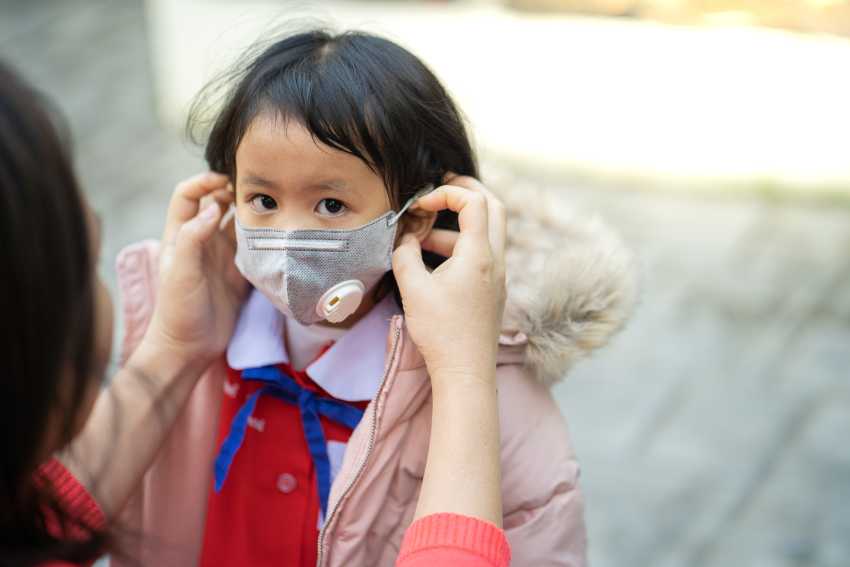Thursday, July 24, 2025
Cantonese opera’s rhythmic clack at theaters in Guangzhou, the serene glide of bamboo rafts across the Li River in Guilin, the shimmering shores of Shenzhen and the peaceful temples of Foshan — these cultural and natural marvels had symbolized China’s return to safe and prosperous tourism. But the rhythm has been disrupted, in July 2025. A painful and pervasive chikungunya virus outbreak, a mosquito-borne disease spread by the aggressive Aedes mosquito has erupted, with Foshan being the epicenter. Now, as the virus percolates farther south throughout China, it has also sown uncertainty and fear across high-profile tourist destinations throughout the region, like Guangzhou, Shenzhen, Zhuhai, Macau, Guilin, Hainan and Hong Kong, which are all now facing the consequences.
Foshan: The Epicenter of the Outbreak
Advertisement
Advertisement
I Foshan, a manufacturing powerhouse and a cultural treasure with its ancient temple ruins, martial arts traditions, and Lingnan architecture. Three days’ journey from Beijing, this is where, in July, over 3,100 cases of chikungunya were reported, the largest outbreak in China since the virus arrived in the mainland in 2008. The city, including the shunde, beijiao, lecong and nanhai districts, has already shuttered its local tourism operations. Classical teahouses, kung fu schools, and centuries-old ancestral halls such as Zumiao Temple are quieter than normal as public health teams scramble to fumigate tourist zones.
Hotels are installing mosquito netting and air conditioners as emergency measures, but group bookings have been delayed or canceled, while travel platforms also emphasize virus alerts. Walking tours and cultural shows have been canceled or shut down, while local businesses face the double whammy of decreased tourism and increased public health costs.
Guangzhou: The Cultural Capital on Alert
Guangzhou, the capital of Guangdong Province, is a short drive from Foshan and commonly combined with it in travel itineraries. The city is known for the Canton Tower, Shamian Island and its world famous dim sum – and has felt a knock on effect from the outbreak in Foshan. While not at the epicenter, the increasing fear of transmission by mosquitoes has prompted the Guangzhou Municipal Health Bureau to start an aggressive anti-mosquito campaign, which involves fogging of public places, educational campaigns on the virus and sanitation checks at tourist attractions.
Tour groups from Beijing, Shanghai and abroad have reportedly stopped coming or have rescheduled visits. Pearl River cruises, popular among both domestic honeymooners and foreign travelers, have been temporarily halted in some district, including in Yuexiu and Haizhu. Even visitors to local markets, temples and restaurants have fallen sharply, particularly among the elderly and families with small children.
Shenzhen: Innovation Meets Insect Vigilance
The high-tech metropolis of Shenzhen, a hub of arresting skyscrapers, tech headquarters and family-friendly parks, is no exception. Shenzhen, as a major transit point for visitors going to Hong Kong or the Pearl River Delta, is very dependent on its role as a gateway city. While it has not documented large numbers of chikungunya infections, its proximity to Foshan and Guangzhou has led the Shenzhen CDC to release cautionary warnings.
Attendance is down at all large theme parks, including OCT East, Splendid China Folk Village and Window of the World. Workers have been told to clean up anything standing water, and there’s new signage warning about preventing mosquito bites. Travel agents serving foreign business visitors have started including disclaimers on their itineraries, and hotel booking apps now highlight “mosquito-safe” properties with sealed windows and built-in repellents as top amenities.
Zhuhai and Macau: Two Sister Cities Go on Alert
Zhuhai, with its seafront promenades, beachside resorts and amusement parks, is on the other side of the water from Macau and is another popular destination. The two cities are frequently combined by tourists for longer vacations. The authorities in Zhuhai have stepped up vector control in public gardens, beaches and resort areas to guard against a possible crossover from the Foshan outbreak, in light of regional ties.
Macau, famous for its glitzy casinos, Portuguese colonial architecture and listed heritage sites, has so far not reported any chikungunya cases, but is highly at risk because of an influx of tourists from mainland Guangdong. The Macau Government Tourism Office has started disseminating information at ferry terminals and border crossings, asking travellers to take preventive steps and collect data on possible symptoms. Casinos have set up UV light mosquito traps, and some tour providers are running only in the middle of the day, when there is less mosquito activity.
Guilin and Yangshuo: Tourism Coasts in South
Farther north, some of the most beautiful karst landscapes on earth, in the city of Guilin and the river town of Yangshuo, both in Guangxi, have so far been spared the virus. But travel agencies are seeing a “perception spillover” effect. Since Guangdong’s cities are the centerpiece of many southern China travel circuits, visitors are eschewing nearby places whether they are currently affected or not.
Li River cruises, bamboo rafting expeditions and mountain hikes that characterize the Guilin experience have seen fewer-than-expected visitors this season. The town’s lively backpacking scene has been tamed somewhat, with fewer foreign travelers checking into hostels and fewer bicycles weaving through Yangshuo’s scenic trails. And stranded are local vendors, many of whom depend on summer traffic and are suffering because people aren’t walking by.
Hainan Island: A Careful Island Getaway What used to be largely a destination for Chinese tourists is increasingly a comfortable place for business and tourists alike
Seated off the coast of China, as the country’s southernmost tropical paradise, Hainan Island has long sold itself as China’s Hawaii. With its sandy beaches, hot springs and rainforest parks, it is a year-round tourist draw. Although there are no confirmed cases yet of chikungunya on the island, local health authorities in Sanya and Haikou have launched prevention campaigns in response to the possibility of local transmission through domestic tourists.
Travelers arriving from Guangzhou, Shenzhen and Foshan are more likely to fly or ferry into Hainan and local hotels have increased their sanitation practices as a precaution. Citronella oil lamps have popped up in public swimming pools, spas and even in the outdoor cafes, which also offer free repellent pouches. The Hainan Provincial Tourism Development Commission, meanwhile, has started to promote low-peak hours and indoor options to entertain guests without direct exposure to high-risk spots.
Hong Kong: Vigilance and Anxiety Over Travel
Hong Kong, which has extensive travel connections to Guangdong, is also on high alert. The city’s Centre for Health Protection has already issued surveillance guidelines to all clinics and hospitals and is closely monitoring travellers from the mainland. No local cases of chikungunya have been reported, but the worry is palpable. City-based travel agents have reported a decline in bookings from Foshan and Guangzhou since mid-July.
Landmarks such as Man Mo Temple, Victoria Peak and Lantau Island are operating as normal but will be the subject of mosquito inspection campaigns. Posters and billboards on MTR trains are also warning Hong Kong commuters about daytime biting mosquitoes. Even the posh Central shopping malls are also employing pest control to protect visitors.
The Greater Context: Climate, Mobility, and Risk As perception of climate risk becomes more widespread and intense, the tendency to avoid it, together with other environmental problems, increases as well.
The evidence is unmistakable:
Climate change is converting once-peaceful areas into disease hot zones. Southern China’s warmer, and increasingly long plumaged rainy weather, has made the region more hospitable to Aedes mosquitoes. Urbanization combined with increased international travel as well as low regional immunity, is creating the perfect storm for outbreaks like the one in Foshan.
Though the virus is not fatal, its debilitating symptoms and long-term joint damage ring true enough to scare off tourists, particularly the elderly and those with health concerns. The hospitality and transport industries in southern China are cooperating with public health departments on efforts to reassure travelers, but confidence will take time to restore.
Conclusion: Public Health and Th e Dance of Tourism
From the incense-filled atmosphere of ancient temples in Foshan, through the futuristic skylines of Shenzhen, to the golden beaches of Hainan, China’s tourism heartland is now walking a narrow path between safety and sustainability. Foshan’s chikungunya outbreak may have stricken the spark, but its embers float over a tourism ecosystem built on movement, trust and emotional connection.
How it plays out will depend on the quality of China’s public health coordination and the flexibility of its tourism industry. Tourists will someday come back, they always do. But for now, the buzz of a mosquito weighs heavier than the sound of a flute ringing along the Li River.
Advertisement
Advertisement
Tags: chikungunya China 2025, china, Foshan, Guangzhou, Guilin, hainan, Macau, shenzhen, Zhuhai
I want to receive travel news and trade event update from Travel And Tour World. I have read Travel And Tour World’sPrivacy Notice.
Thursday, July 24, 2025
Thursday, July 24, 2025
Thursday, July 24, 2025
Thursday, July 24, 2025
Thursday, July 24, 2025
Thursday, July 24, 2025
Thursday, July 24, 2025
Thursday, July 24, 2025




